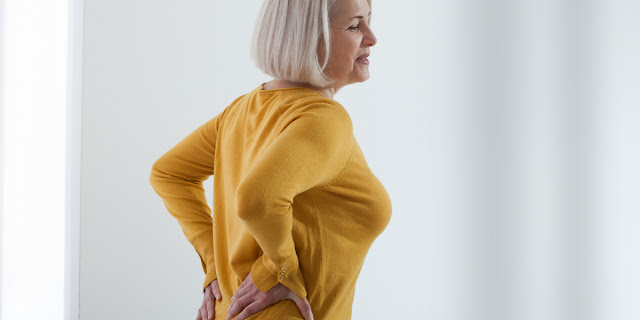Keeping your bones healthy during Menopause

Keeping your bones healthy during Menopause
Over the course
of life, the body maintains a balance between the loss of bone mass (bone) and
the creation of new bone mass. Bone mass reaches its peak (in size and density)
at the age of approximately 30 years. Then, between the ages of 30 and 35, the body
begins to lose bone mass more rapidly than it can build it.
Menopause - the suspension of menstruation, usually around the age of 50 -
considerably accelerates the loss of bone mass. After menopause, the ovaries
stop making estrogen, a hormone that helps keep bones strong. Even during
perimenopause (the two to an eight-year period before menopause), when
menstruation becomes irregular, the level of estrogen can begin to drop and
cause a rapid loss of bone mass.
Over time, this
excessive bone loss can initially cause osteopenia (loss of bone mass) or even
osteoporosis, a disorder in which the bones become weak and the chances of
fracture increase.
How can the loss of bone mass be reduced and what is its
treatment?
Diet and
lifestyle can prevent and treat bone loss. However, successful treatment of
osteoporosis generally includes a combination of nutritional supplements,
lifestyle changes, and medications.
● Calcium. Starting in
their 30s or 35s, women should get 1,200 mg of calcium every day. Starting in
their 50s (typically when menopause begins), women should consume 1,200 to
1,500 mg of calcium every day. To maintain an adequate calcium level, you
should eat a well-balanced diet that includes calcium-rich dairy products and
take a daily calcium supplement, if necessary.
● Vitamin D. The body
needs vitamin D to absorb calcium and integrate it into the bones. Sunlight
produces vitamin D in the skin. The main food sources are milk and cereals
fortified with vitamin D, egg yolks, saltwater fish and liver. Some calcium
supplements and most multivitamins contain vitamin D. Adults under 50 years of
age should get 800 IU (International Units) of vitamin D daily. From the age of
50, 800 to 1,000 IUs are needed daily.
● Exercise. Bone strength
stays stronger if you use them daily for weight-bearing activities, such as
walking or lifting weights. Lack of exercise accelerates bone loss after
menopause. At least 20 minutes a day of exercise can reduce bone loss.
● Medicines. There are
several medications that can prevent or even reverse osteoporosis. These
medications can be used in addition to calcium, vitamin D supplements, and
exercise:
- Bisphosphonates (alendronate, risedronate,
ibandronate, and zoledronic acid)
- Raloxifene
- Hormone therapy (estrogen alone or, if you still have
a uterus, combined with progestin) in some women for a short time
- Human parathyroid hormone (teriparatide) for acute
osteoporosis
- Calcitonin



Comments
Post a Comment